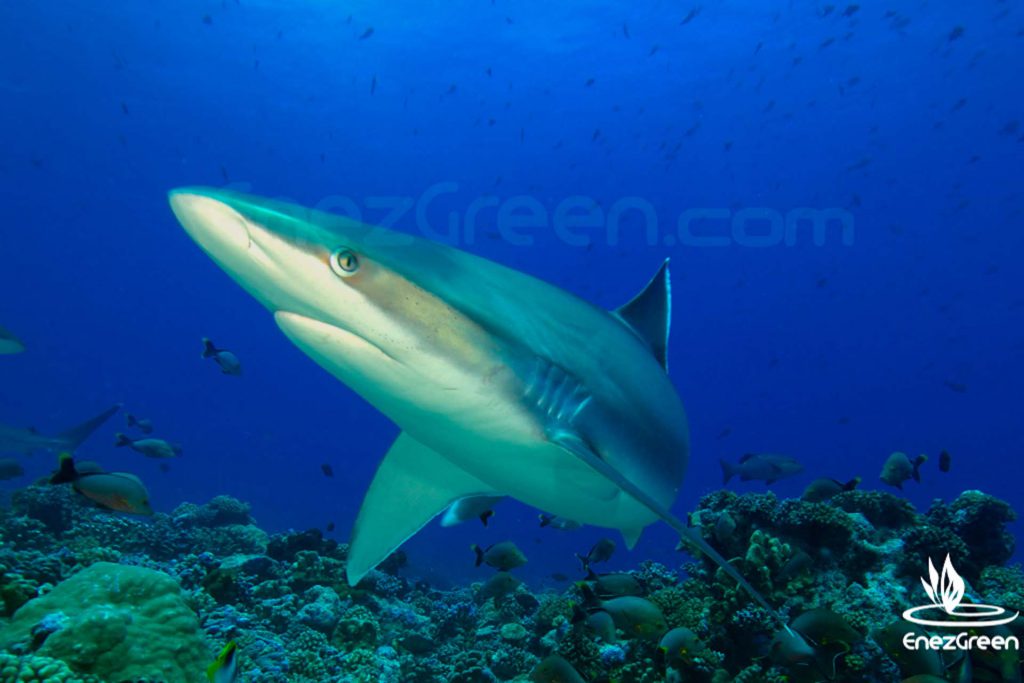The trade in shark meat has skyrocketed, increasing 42% since 2000 : more than 117,000 tonnes of meat was exported globally in 2011
United Nations’ Food and Agricultural Organisation (FAO) released a report showing that the overall global trade in shark fins has been declining, probably in part because of activism. But sharks comprise more than fins, and the trade in shark meat has skyrocketed, increasing 42% since 2000. More than 117,000 tonnes of meat was exported globally in 2011, along with 17,500 tons of shark fins.
“There is a persistent belief among many well-intentioned folks that the only threat that sharks have ever faced, or are currently facing, is shark finning”, said David Shiffman, a well-known shark scientist at the University of Miami. He argues that the focus on fins distracts attention from more important conservation actions.
Shark fisheries scientist Shelley Clarke, one of two co-authors of the report, says “Fins are an easy target for activists in countries with no taste for the Chinese delicacy. It’s relatively easy to ban a product that you never use.”
Conservationists would be wise to examine their own countries’ practices first
In the United States, the practice of shark finning has been federally banned since 2000. But ending the wasteful and cruel practice doesn’t mean fins aren’t being sold. According to the FAO report, the United States exported nearly 38,000kg of shark fins in 2011, a year after Congress mandated that sharks be brought to shore with their fins “naturally attached”.
Furthermore, such initiatives don’t extend to sharks’ cousins, which make up 75% of the US catch of sharks and their relatives in the cartilage-skeletoned class Chondrichthyes.
The United States ranked fifth globally in chondrichthyan catch in 2011, pulling in more sharks and rays than South Korea, Japan and Thailand combined. The United States the third-largest chondrichthyan exporter by volume and the second-largest by value.
Perhaps even more surprising than the volume of catch is where caught meat is headed: the top three importers of US shark meat were France, Germany and Canada, while US rays and skates went mainly to South Korea, France and the United Kingdom.
The European’s biggest current catches – blue sharks, mako sharks, smooth hounds and cat sharks – are unregulated and have not been assessed for sustainability
The picture is equally mixed in other developed nations. The European Union, for example, has taken great strides toward the conservation of sharks in the past couple of decades, implementing strict fins-attached rules and closing some unsustainable fisheries. But the bloc’s biggest current catches – blue sharks, mako sharks, smooth hounds and cat sharks – are unregulated and have not been assessed for sustainability.
Conserving sharks requires broadening the conversation beyond China and shark fin soup
“We don’t need to highlight or point the finger of blame at certain countries”, Clarke said. “We need broad-scale systems and international management” – which is why the top recommendation in the FAO report was for standardised commodity codes by product to make clear what is being imported and exported around the world.
Because of a lack of global standards, a box labelled “shark meat” might contain dried, frozen or fresh fins or fillets from any shark species. Sometimes, shark products aren’t even labelled, marked instead under categories for unidentified fish.
As mundane as it sounds, better record-keeping would have a greater impact on shark conservation than any ban on the collection or trade of shark fins.



